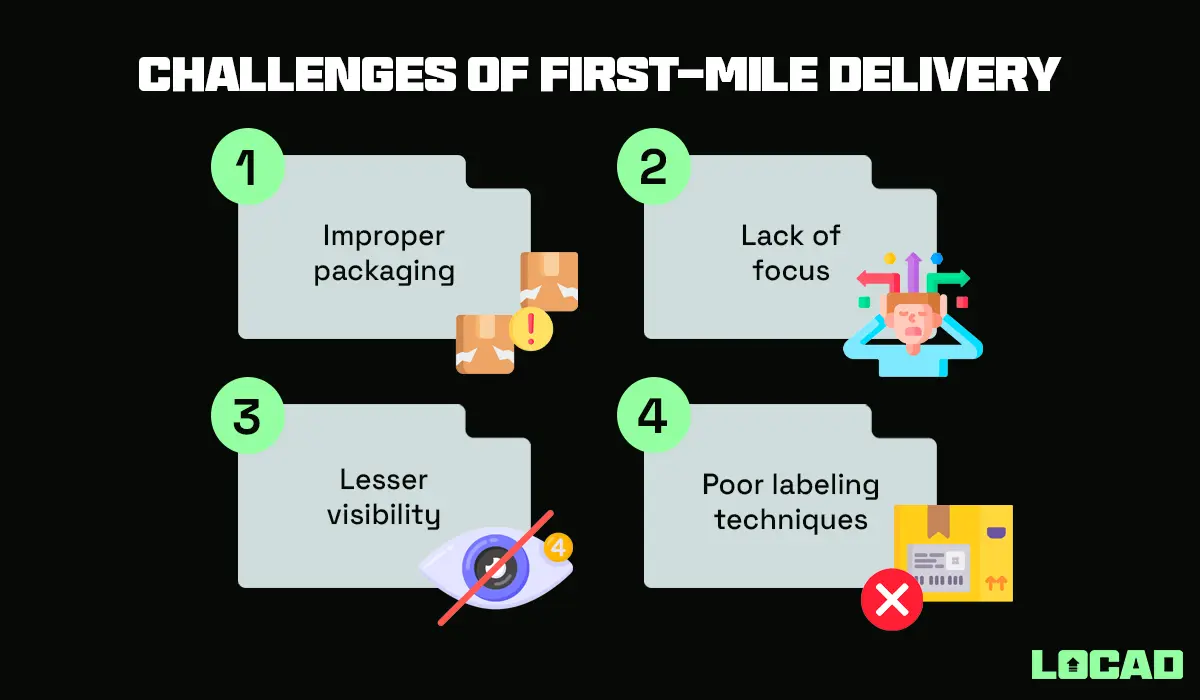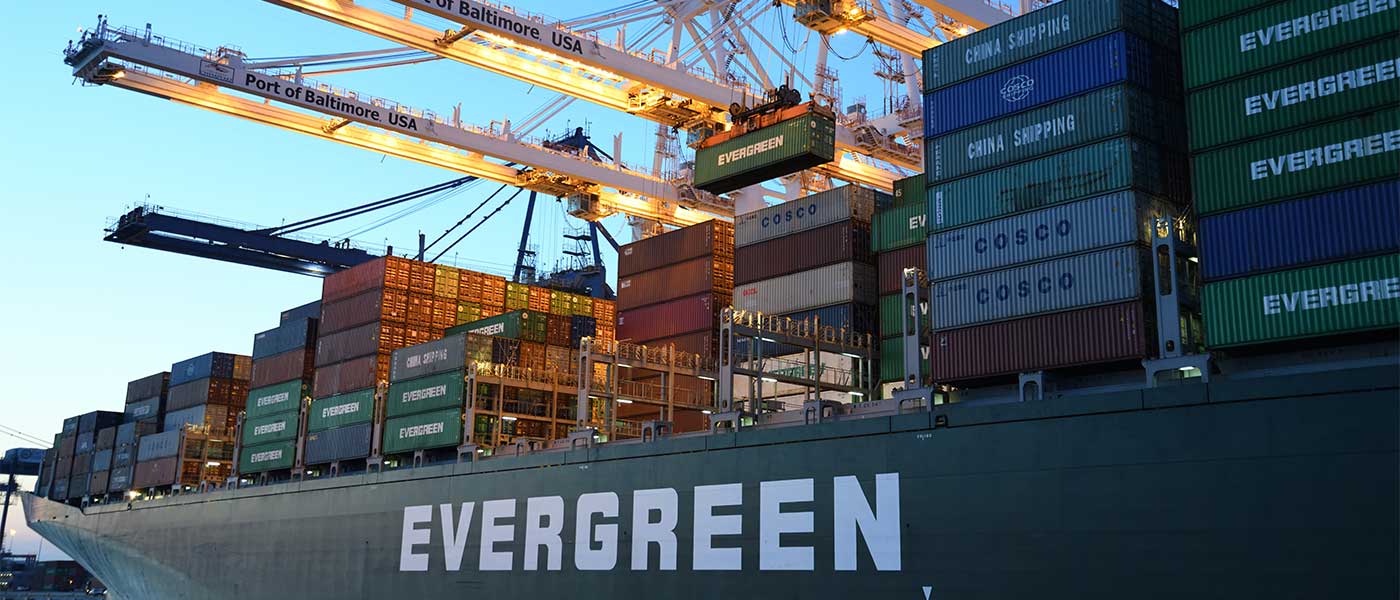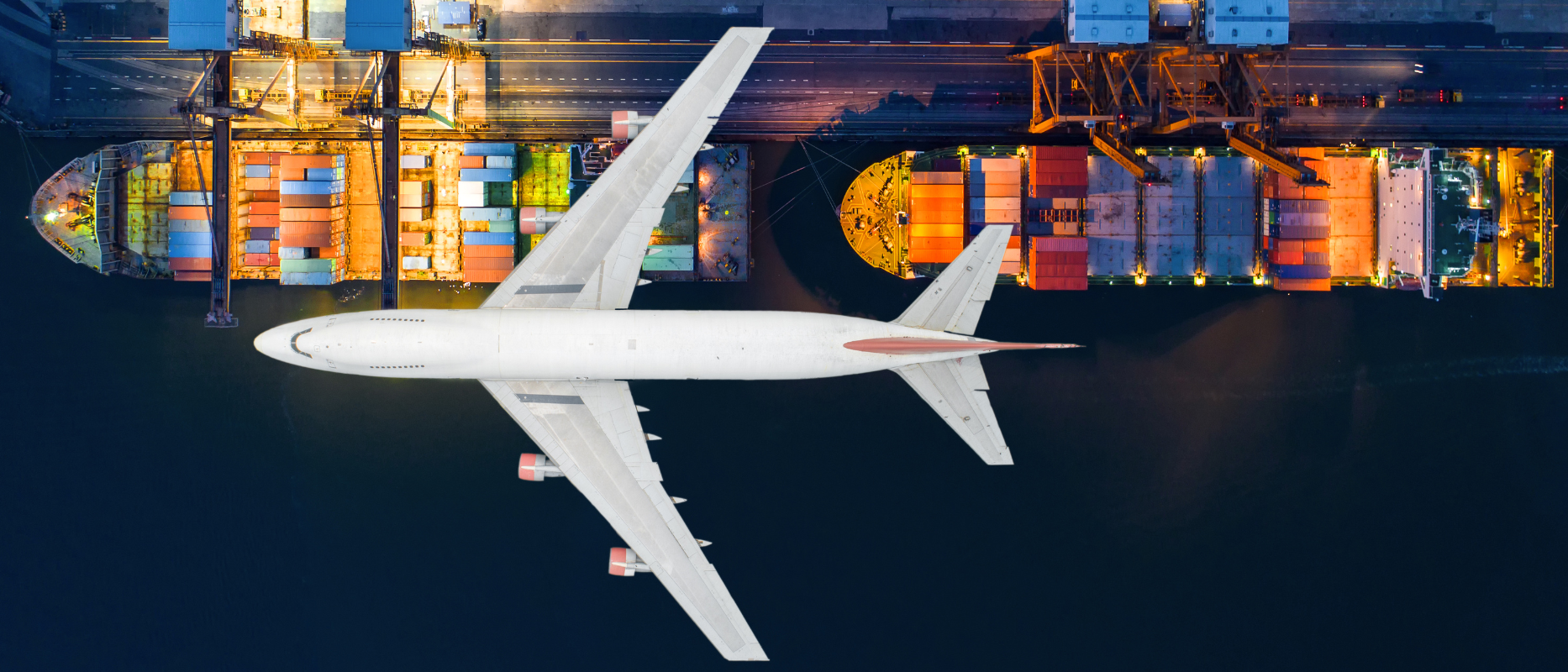E-commerce has witnessed significant growth, and as a result, cut-throat competition prevails in the modern market. In such a scenario, every business aims at securing a wider client base by providing greater satisfaction. This, in turn, has led to the implementation of effective logistics operations and supply chain management.
Now, every ordered product or good goes through a series of operational processes, which entails a long journey till it reaches the customer. Both first-mile and last-mile logistics play vital roles in this supply chain.
Continue reading to learn about the differences, functions, challenges, and ways to optimize these logistical processes.
First-mile Logistics

First-mile logistics mainly involves the picking up of orders from a seller’s warehouse and dropping them off at their next destination. First-mile holds different meanings for different kinds of businesses. Retailers consider it as the shipment of goods from a local distribution platform to multiple stores. On the other hand, the first mile refers to the transportation of products from a factory or production plant to a distribution platform for manufacturers.
In short, first-mile logistics is the first step towards delivering an ordered product to its customer. It generally involves the transportation of goods but also includes assembling. It forms the foundation for further logistical operations.
How does it work?
In first-mile delivery, a courier company picks up orders from the manufacturer’s premises and initiates the transportation process. After the order/s leaves the warehouse, it is processed and taken to the next distribution hub.
Accurate information about the pick-up location of the seller’s warehouse, weight, size, dimensions, and other relevant details of the product must be provided to the courier company beforehand.
Last-mile Logistics

Last mile logistics can be defined as the ultimate stage in order delivery as it picks up and transports the products from the distribution center, delivering them to the customer. Generally, small carriers are in charge of the transportation process.
Consumers and businesses attach more importance to last-mile delivery as it offers cost-effective, faster delivery (instant or same-day delivery). For business owners, it is more profitable and growth-oriented.
How does it work?
Last-mile delivery initiates when the ordered products reach the nearest distribution hub. The carrier then picks up and loads the parcel from the centre and transports it to the drop-off location affixed on the package and updated in the software. Once the delivery personnel hands over the package to the customer, this process ends.
The Difference Between First-mile Vs. Last-mile Delivery
In a nutshell, first-mile delivery encompasses the initial logistical operations of delivering products from the seller’s premises, while last-mile delivery focuses on the ending operations of the supply chain. First-mile involves picking up orders from the manufacturer or seller with the help of a courier and transporting it to the carrier. Last-mile ceases when the order reaches the consumer’s doorstep.
The basic differences between first-mile and last-mile delivery are summed up in the tangible below:
| First-mile Delivery | Last-mile Delivery | |
| Meaning | It is the transportation of goods from the seller’s inventory/warehouse to the distribution centre. | It involves transporting ordered goods from the last distribution centre to the customers. |
| Stage | First stage in the supply chain. | Last stage in the supply chain. |
| Shipment size | It deals with bulk orders from the inventory, so the shipment size is huge. | Since individual orders are delivered to end customers, shipment size is smaller. |
| Packaging and labeling | Inventory is packed and labeled in batches. | Specific SKUs are used for packaging and labeling for the transportation of goods to particular destinations. |
Why First-mile Delivery is Important for E-commerce
Customers look forward to faster delivery of goods in pristine condition. Even a small flaw in the initial stages of delivery can impact the quality of the product and result in loss of customers. To maintain qualitative delivery and retain and enlarge the customer base, first-mile delivery needs to be perfected in every respect.
Although first-mile and last-mile delivery stand poles apart in the supply chain, both have distinct roles in ensuring customer satisfaction. Efficiency in first-mile delivery helps in rendering a better last-mile delivery experience.
First-mile Delivery Challenges

1. Improper packaging
Faster delivery is the key to success in the rat race. However, the packaging is often affected by hasty delivery. Most businesses opt for standard packaging materials regardless of the kind of product to be shipped. This might delay freight forwarding due to material damages sustained in the first mile.
2. Lack of focus
First-mile often takes a backseat compared to last-mile delivery as most businesses attach more importance to the latter. However, it is necessary to offer complete transparency to the customers right from the initiation of delivery till it reaches them.
3. Lesser visibility
Lesser visibility is one of the major impediments to first-mile delivery. Factors like the implementation of incompetent tracking methods, inefficient handling, and en route operational delays add to reduced visibility of product movement.
4. Poor labeling techniques
Labeling serves a small yet distinct role in first-mile delivery. Ineffective labeling, particularly manual labeling that offers incomplete product details can create problems in dispatching and delay the delivery process.
First-mile Delivery Best Practices to Optimize Your Supply Chain
The first step towards optimizing the supply chain is to digitize and automate the first-mile logistics operations. Application of advanced and updated technology according to the requirements of the business can help to convert expenses into funds, which fosters growth. Here are some steps you can follow to optimize your first-mile delivery:
- Join hands with a technologically advanced 3PL
- Plan the supply chain procedure and locate the gaps in advance
- Collect and analyze data regularly
- Make the warehousing procedure more organized
- Opt for packaging based on the product to be delivered
- Create a proper labeling system
- Have a sound tracking system in place
What is the Last-mile Problem?
The last segment of the delivery process can be the deal breaker if products are not delivered timely and in a good state. Certain difficulties ensue in the last mile delivery owing to its expense and complexity. A few major last-mile problems include –
- Enhancing infrastructure
- Ensuring visibility and transparency
- Minimizing cost
- Increasing efficiency
- Standardizing routes
For instance, businesses have to rely on external services to get goods delivered during unprecedented seasonal fluctuations and peak times, especially while serving the global market. Factors like incomprehensible delivery addresses, traffic congestion, and limited parking area can cause delays.
Moreover, the unavailability of customers, last-minute change in delivery time or location, etc., makes it nearly impossible to chart out a standardized delivery plan.
How Technology is Improving Last-Mile Delivery
Technology is improving the last-mile delivery process to help reduce and eliminate delays enabling improved consumer experiences and more efficient…
The Challenges of Last-mile Logistics
1. Growing expenses
Despite being the shortest process, last-mile delivery can be pretty expensive, particularly in cases of cancellations and delays. Levying these additional costs on end customers can lead to cart abandonment and loss of both customers and future orders. This increases the financial burden on business owners.
2. Unpredicted problems
Deliveries are subject to unforeseen complications, especially while covering long distances. For instance, if the regular delivery route is under construction, you might have to switch to another route that can take longer. An emergency fund must always be kept aside to deal with these situations.
3. Delays
Delays in delivery can seriously impact the business by increasing the cost. Failures in delivering within the deadline can make customers dissatisfied and, consequently, cancel orders.
4. Lack of real-time visibility
Lack of real-time visibility and transparency is a major challenge in last-mile logistics. Loss of communication or tracking can potentially disrupt the entire delivery process and incur hefty losses.
5. Reverse logistics
Transporting returned orders back to the seller is equally important. An efficient reverse logistics system helps businesses to regain value from returned goods.
6. Outdated technology
Technology plays a vital role in the entire supply chain. Incorporating backdated technology not just makes you inefficient in maintaining smooth deliveries, it renders you vulnerable in the highly competitive market. Technologies such as advanced tracking tools and GPS systems assure flexible and timely deliveries.
7. Ineffective route planning
Improper route planning can add to operational costs, especially while catering to a wider market. Optimization of routes based on customers’ locations is required to avoid unnecessary hassles.
Steps to Optimize Last-mile Logistics
- Implementation of modern technologies and tools depending on your business requirements
- Have properly engineered and realistic plans in place that fall in line with your business objectives
- Evaluate and analyze data continuously
- Supervise and monitor the actions of the driver/s
- Monitor and evaluate customer response
- Standardize the routes
- Always have a backup plan and emergency funds to cope with unpredicted events
Conclusion
It can be stated that both first-mile and last-mile logistics have an equally important part in logistical operations, so you must levy equal emphasis on each. If you ignore the first mile, the whole freight forwarding and the delivery process might get affected. On the other hand, any slack in the last mile can land you in a grievous state in this highly competitive market. Once the entire delivery process is carried out smoothly, the end result is bound to be fruitful.
Frequently Asked Questions
What is the difference between first mile delivery and last mile delivery?
The difference between first mile delivery and last mile delivery lies in their positions within the supply chain. First mile delivery refers to the transportation of goods from the point of origin (such as a warehouse or manufacturer) to a transportation hub, while last mile delivery involves the movement of goods from the transportation hub to the final destination (typically the customer’s doorstep).
What is an example of last mile delivery?
An example of last mile delivery is the delivery of packages by courier services or local delivery companies to individual households or businesses.
What is first mile and last mile connectivity?
First mile and last mile connectivity refers to the seamless integration of transportation and logistics networks between the point of origin and the transportation hub (first mile) and between the transportation hub and the final destination (last mile). It ensures smooth and efficient movement of goods throughout the supply chain.
What is an example of first mile delivery?
An example of first mile delivery is a farmer delivering produce to a distribution center or a manufacturer transporting raw materials to their production facility.
What is the advantage of last mile delivery?
The advantage of last mile delivery is that it focuses on the final leg of the delivery process, ensuring timely and convenient delivery of goods to customers, enhancing customer satisfaction, and enabling businesses to differentiate themselves in a competitive market.












